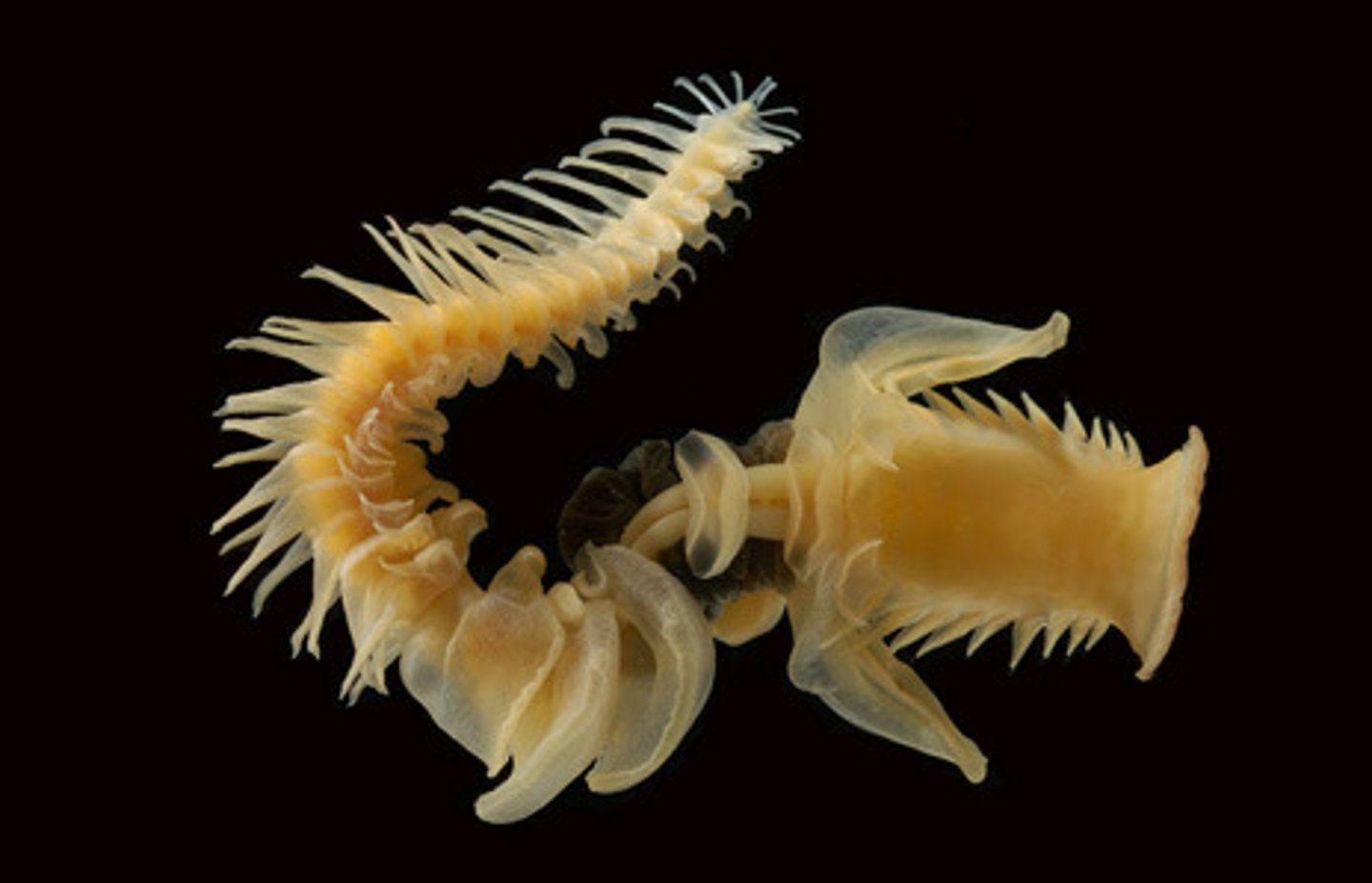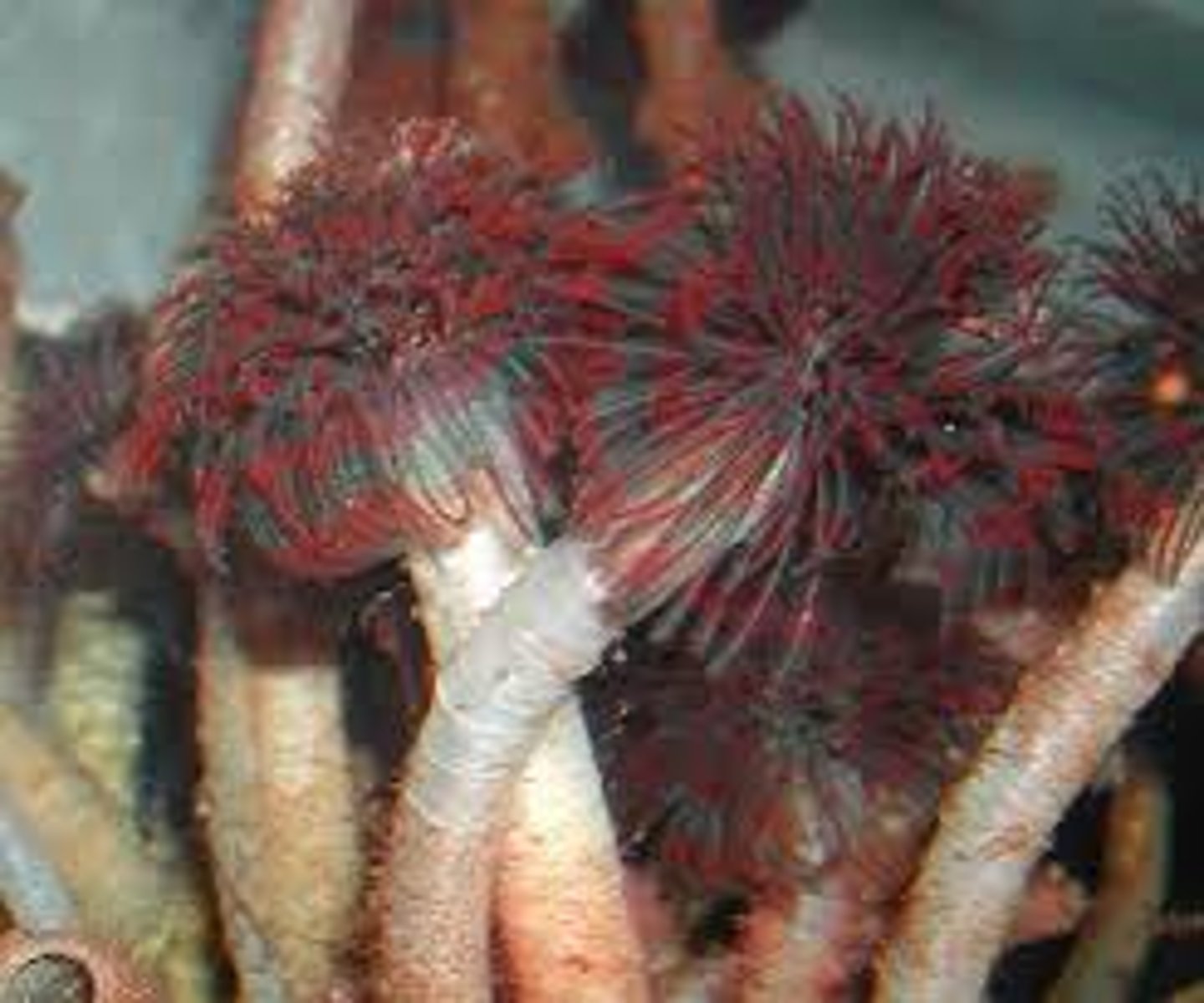Lab 6: Phylum Annelida Quiz
1/26
There's no tags or description
Looks like no tags are added yet.
Name | Mastery | Learn | Test | Matching | Spaced |
|---|
No study sessions yet.
27 Terms
What are the Classes Involved in Phylum Annelida?
Polychaeta, Oligochaete, and Hirudinomorpha
What species are in Class Polychaeta
Nereis, Cheatopterus, and Eudistyla
What are the major body plan features of Class Polychaeta?
1. true coelomate
2. contain chaeta
3. coeleum is organized into segments separated by septa
4. contain parapodia on each segment
5. little tagmosis
6. cephalized
7. have head magma, eyes, palms, cirri, and tentacles
What is the function of circular muscles? Where are they located?
1. constrict to reduce diameterr
2. outerrmost layer near epidermis
What is the function of longitudinal muscles? Where arer they located?
1. contract to lengthen the body
2. beside circular muscles
What is the Ecology of Class Polychaeta?
1. aquatic; mainly marine, some freshwater
2. some free moving, some sessile
What is the genus name of Class Oligochaete
Lumbricus Terrestris (earthworm)
What are the major body plan features of class Olgiochaeta?
1. uniform segments
2. small lateral chaeta
3. no parapodia
4. movement through peristalis
5. citellium on mature males; secretes mucous and egg cocoon
What is the ecology of class Olgiochaeta?
1. mainly freshwater, come marine
2. hermaphroditic
What is the group of Class Hirudinomorpha ?
the leech
What are the major body plan features of Class Hirudinomorpha?
1. no chaeta
2. anterior and posterior sucker
3. 34 segments; superficial annuli
4. invisble citellum
5. inchworm movement by suckers
6. dorso ventrally flattened
What is tagmatization?
specialization of regions of the body for specific functions
What are parapodia?
paired lateral extensions on each segment; used for swimming, crawling, and burrowing
What are chaetae?
bristles made of chitin
What are annuli?
superficial external rings on a leech
What are cirri?
The stiff joining together of cilia to form leg-like structures for walking-like locomotion
What is a coelom?
A fluid-filled cavity that is completely lined by mesoderm tissue.
What is the chaeta made up of in Lumbricus terrestis?
Calcium carbonate; bifringent
What are chaetal retractor muscles?
Protractor (circular) and retractor (longitudinal) muscles used for protruding and withdrawing the chaetae in Class Oligochaete
What is the purpose of fans in Chaetopterus?
modified parapodia to pump water into the anterior end
What do the lighter stained cells in the clitellum of Lumbricus secrete? What is its purpose?
1. Albumin
2. Food for the egg
Label Lumbricus terrestris
Locate the hearts, dorsal blood vessels and ventral blood vessels, mouth, and pharynx in the Lumbricus Terrestris

What is acicula?
Chitinous rods aiding in structural support and digging
Class Polychaeta
Nereis
What Class and Genus is this?

Class polychaeta
Chaetopterus
What Class and Genus is this?

Class Polychaeta
Eudistylia
What Class and Genus is this?

albumin in lumbricus
light stained cells secrete this for food for the developing embryos in cocoon